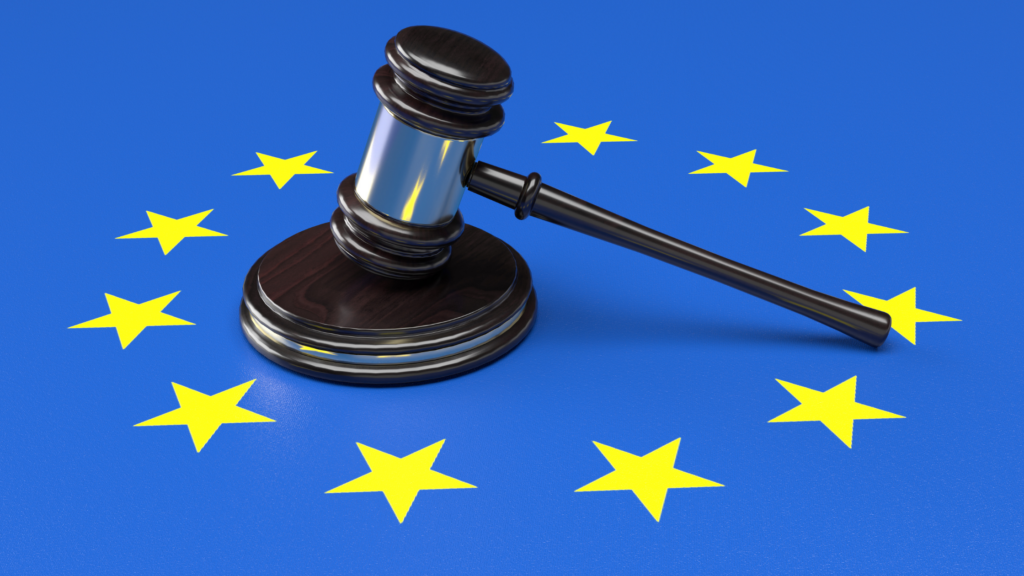
The EU AI Act: A New Era of AI Governance Began August 1st
The European Union’s AI Act, which entered into force August 1, 2024, marks a historic milestone as the world’s first comprehensive regulation for artificial intelligence. This groundbreaking legislation, initially agreed upon in December 2023, aims to establish a robust framework for AI development and deployment, ensuring that technology advancements align with societal values and human rights.
The Act adopts a risk-based approach to AI regulation, imposing the strictest measures on “high-risk” systems, including those used in employment and law enforcement. At the same time, it entirely prohibits AI systems deemed “unacceptable,” such as social scoring and police profiling. As the world watches closely, the EU’s regulatory efforts could set the stage for global AI governance standards.
EU AI Act Timeline

The Global Ripple Effect of the EU AI Act on Other Countries
You may be wondering why you should care if your company doesn’t have operations in the European Union. Even if your business operates outside the EU, the implications of the EU AI Act are far-reaching. Countries such as Canada, South Korea, and Brazil are expected to align their AI regulations with the standards set by the EU, creating a cohesive global framework for AI governance. Additionally, the Act’s comprehensive and mature approach is likely to influence future regulations in other regions, including the United States. By understanding and preparing for these regulations now, businesses can stay ahead of the curve, ensuring compliance not only with current but also with forthcoming international standards. This proactive approach not only mitigates potential legal risks but also fosters trust and ethical responsibility in AI deployment, which are crucial for maintaining a competitive edge in the global market.
Understanding the Risk-Based Approach
High-Risk Systems
For high-risk AI systems, the Act mandates stringent requirements to mitigate potential harms. These include tools related to employment, where AI decisions could significantly impact individuals’ livelihoods, and law enforcement, where AI could influence legal outcomes.
- Employment: AI systems used in hiring processes must demonstrate transparency, fairness, and accountability. Employers need to ensure their AI tools do not perpetuate biases or discrimination.
- Law Enforcement: AI applications in policing must adhere to strict guidelines to prevent misuse and protect citizens’ rights. The Act prohibits technologies like predictive policing and real-time biometric surveillance.
Unacceptable AI Practices
The Act categorically bans AI systems considered to pose unacceptable risks to society. This includes:
- Social Scoring: Systems that rank individuals based on their social behavior or characteristics, similar to China’s social credit system.
- Police Profiling: AI tools that generate profiles of individuals based on their ethnicity, gender, or other sensitive attributes.
Compliance Requirements for Companies
Minimal-Risk and Limited-Risk Systems
The regulation differentiates between minimal-risk and limited-risk AI systems, imposing varying levels of oversight:
- Minimal-Risk AI: Technologies like spam filters face no additional requirements, recognizing their relatively low potential for harm.
- Limited-Risk AI: Systems such as chatbots must inform users that they are interacting with AI, ensuring transparency and user awareness.
General-Purpose AI
The Act introduces specific rules for general-purpose AI, including foundation models like those powering ChatGPT. These rules aim to ensure that even versatile AI systems adhere to ethical and legal standards.
Preparing for Compliance
With the majority of the Act’s provisions set to apply from August 2026, organizations have a crucial window to prepare for compliance. Failure to adhere to the regulations can result in substantial fines of up to 7% of a company’s annual global turnover.
Steps for Compliance
- Mapping AI Projects: Organizations need to catalog their AI initiatives and classify them according to the risk categories outlined in the Act.
- Risk Assessment: Each AI use-case must be evaluated for potential risks and compliance requirements.
- Compliance Roadmap: Companies should develop a detailed compliance strategy tailored to their specific AI use-cases and business operations.
Global Implications and Industry Reactions
The AI Act has sparked diverse reactions from the business community. While some European businesses express concerns about the potential impact on competition and innovation, others view the Act as a necessary step toward responsible AI.
- Proponents: Supporters argue that the risk-based approach balances innovation with the protection of citizens’ rights, setting a responsible framework for AI development.
- Critics: Opponents worry that the stringent regulations might stifle innovation and place European businesses at a competitive disadvantage.
The EU AI Act represents a pivotal moment in the governance of artificial intelligence, positioning the European Union as a global leader in AI policy. By adopting a risk-based approach, the Act seeks to safeguard human rights while fostering innovation. As companies navigate the compliance landscape, the world will be closely watching the EU’s enforcement of these regulations and their impact on global AI practices. This new era of AI governance holds the promise of ensuring that technological progress benefits society as a whole, while mitigating the risks associated with its misuse.
